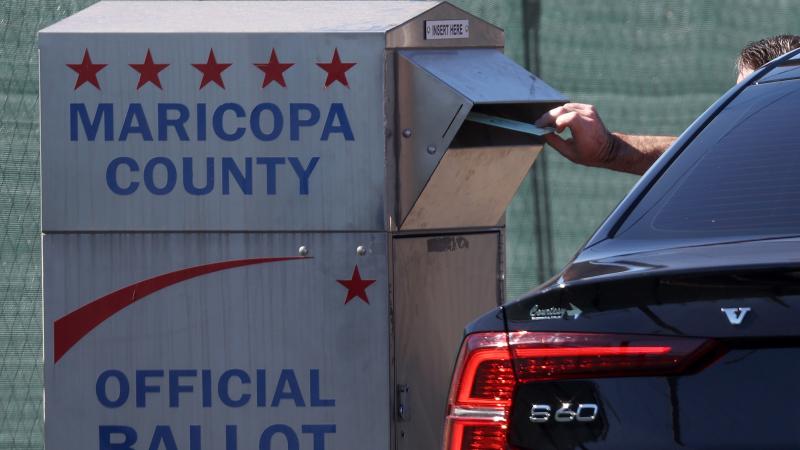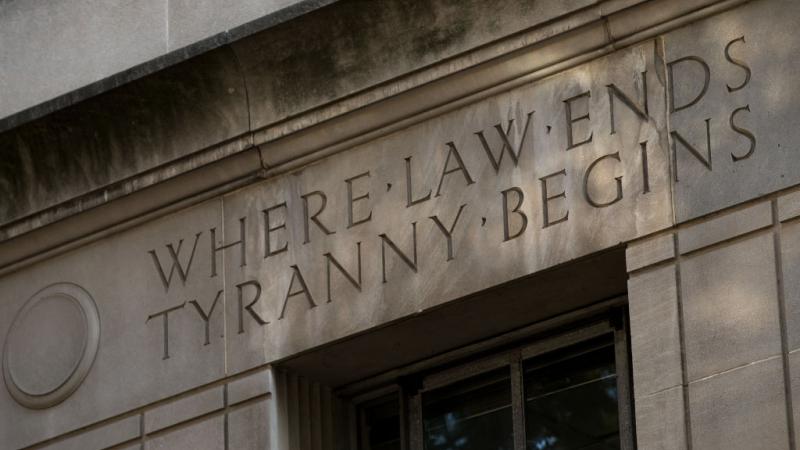Partial tally of rejected Pa. mail ballots raises questions, as observers await final data
A historically average rate of rejected mail-in ballots in this year's election in the state could significantly erode Joe Biden's lead over President Trump.
In Pennsylvania, a state where a historically average rate of rejected mail-in ballots in this year's election could significantly erode Joe Biden's lead over President Donald Trump, a partial tally of such rejections has observers primed to analyze final data from in the state.
The non-partisan United States Election Project research site maintained by University of Florida professor Michael McDonald reports 1,009 rejected mail-in ballots, out of a total 2,615,045 mail-in ballots cast as of Nov. 5, or a rate of 0.038%. However, "The few rejected ballots reported here," the site cautions, "are for first time voters who did not provide required id with their mailed ballot or a missing signature."
The historical rate of mail-in ballot rejection generally hovers around 1%. For first-time mail-in voters, the rate can jump as high as 3%.
In 2016, Pennsylvania received about 266,208 mail-in ballots. Just under 1% of them, 2,534, were rejected, roughly in line with historical expectations, according to the 2016 Election Administration and Voting Survey.
A historically average overall rate of rejected mail-in ballots applied to Pennsylvania's reported mail-in ballot total for 2020 would result in approximately 26,000 rejections. Returned mail ballots in the state this cycle were approximately 65% Democratic and 24% Republican. Applying those proportions to 26,000 would translate to a historically average 16,900 rejected Democratic mail ballots and 6,240 rejected GOP mail ballots, a difference of 10,660 that could be shaved off Biden's current, reported lead of about 83,000 votes in Pennsylvania.
Until all rejected 2020 mail-in ballots have been tabulated in the state, a rejection rate cannot be calculated, and reliable inferences cannot be drawn from the limited report of rejected ballot numbers currently available.
The Pennsylvania Department of State told Just the News that the currently listed number of rejected ballots "is a small subset of the total number of ballots which were rejected," and that the ultimate number of rejections is typically not released until "some weeks after the election."
DOS spokeswoman Wanda Mullen said that Pennsylvania state law changed from 2016 to 2019 "to allow voters to cast a mail ballot without an excuse," leading to a lower likelihood of rejections in current elections.
Just the News will update this story as more complete data are released.
Mail-in ballots rejected for a variety of reasons
Voting by mail, unsurprisingly, has a significantly higher rejection rate than voting in person. Mail-in balloting often results in errors such as miswritten forms, non-matching signatures and improper vote tabulation.
The number of voter errors goes up for first-time mail-in voters, with rejected rates among that group sometimes reaching rates as high as 3%. Millions of Americans voted by mail for the first time during the 2020 election, largely out of concerns over the COVID-19 pandemic.
As of Nov. 20, the race in Pennsylvania between Democrat Joe Biden and Republican President Donald Trump was extremely close, with nearly all the ballots counted and Biden leading by around 83,000 votes.
Correction: An earlier version of this story incorrectly reported a premature, overall mail-in ballot rejection rate in Pennsylvania on the basis of a partial, early count of rejected absentee ballots current as of Nov. 5. A final mail ballot rejection rate "is typically not available until some weeks after the election, once all ballots have been canvassed by counties," a spokeswoman for the Pennsylvania Department of State has clarified. In this cycle, she added, "The canvassing of mail ballots in some counties continued through the week of November 9."
















